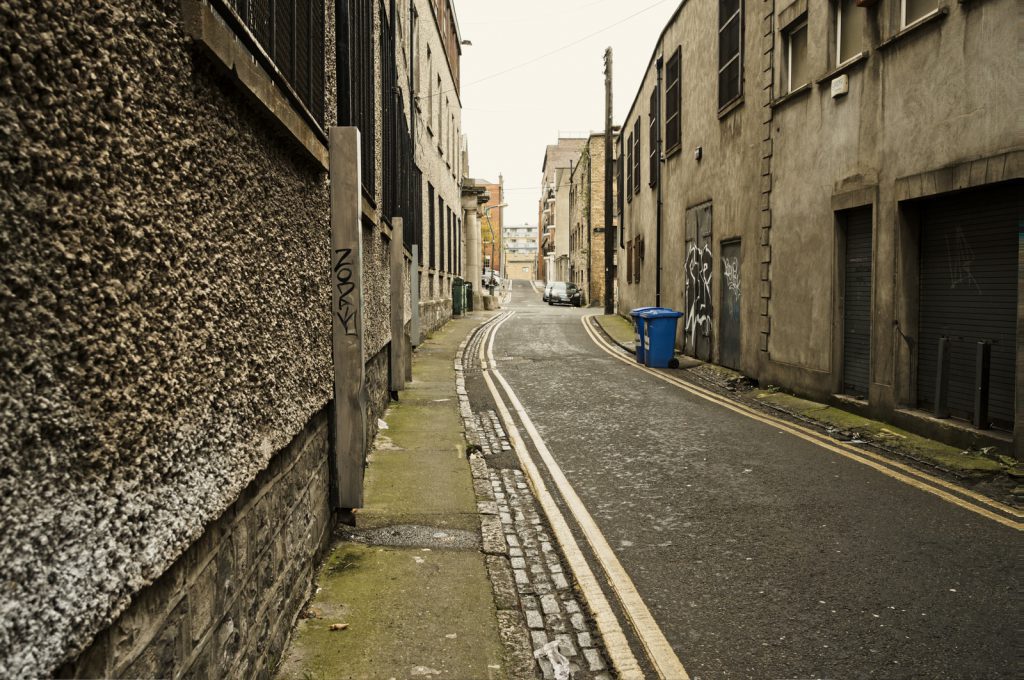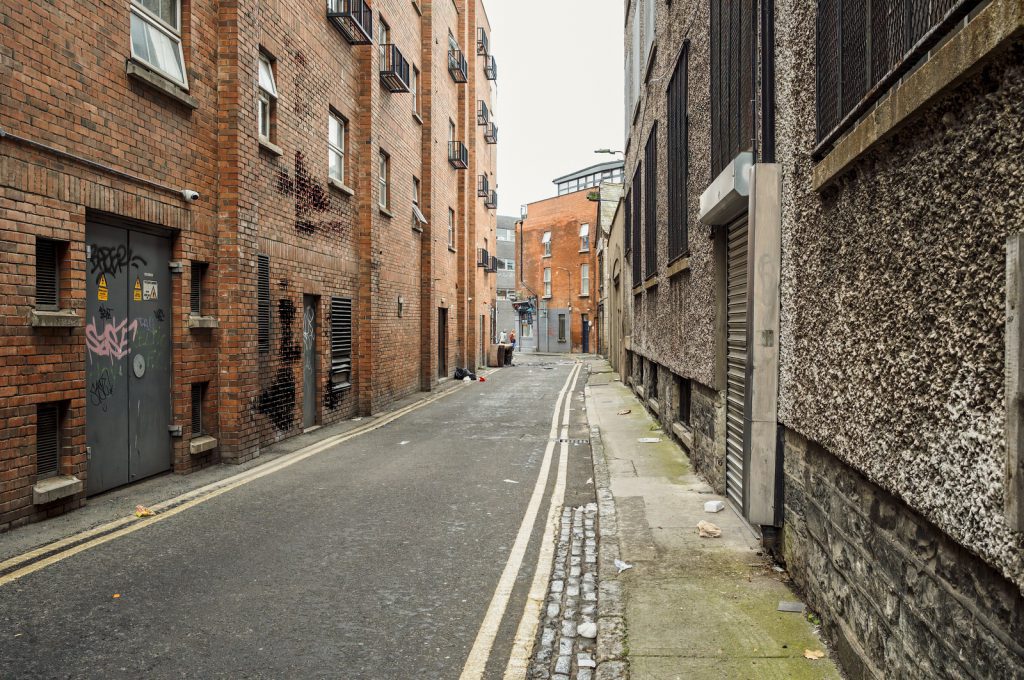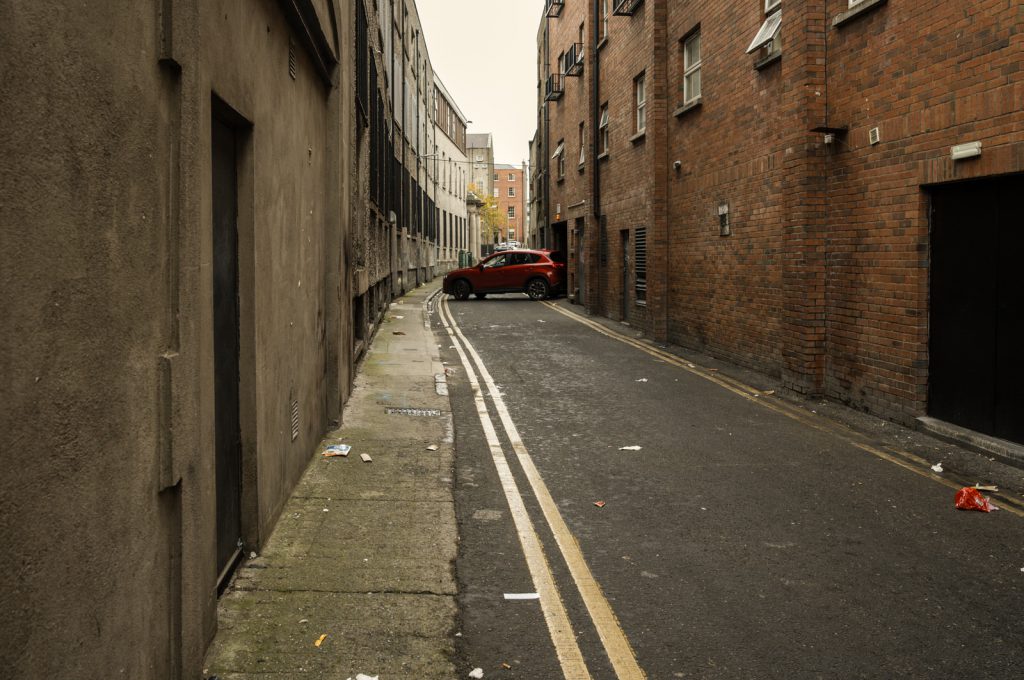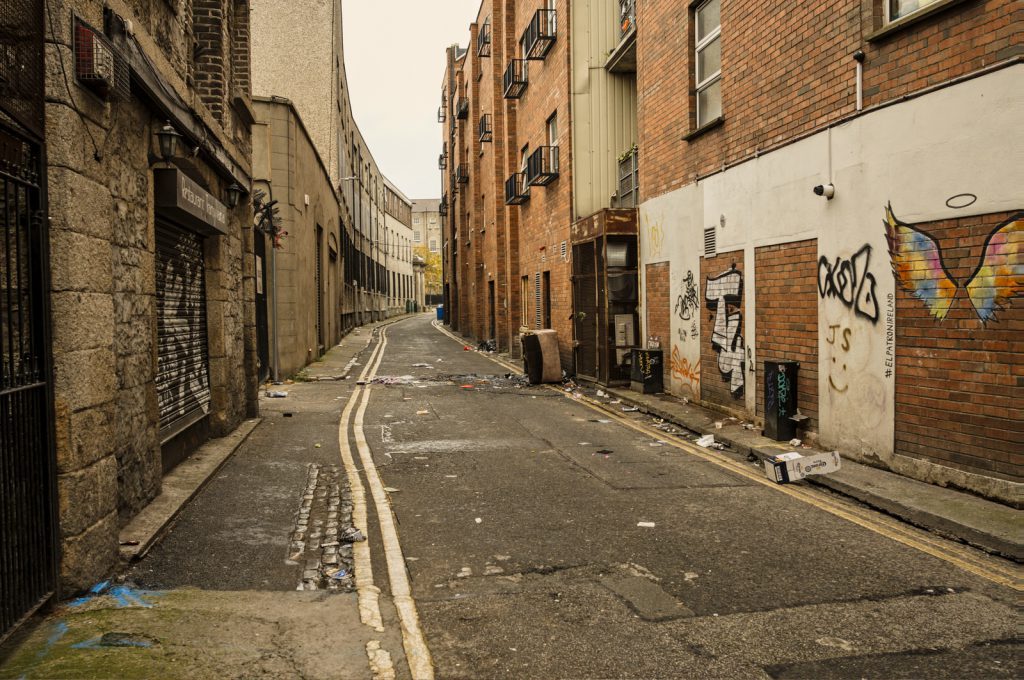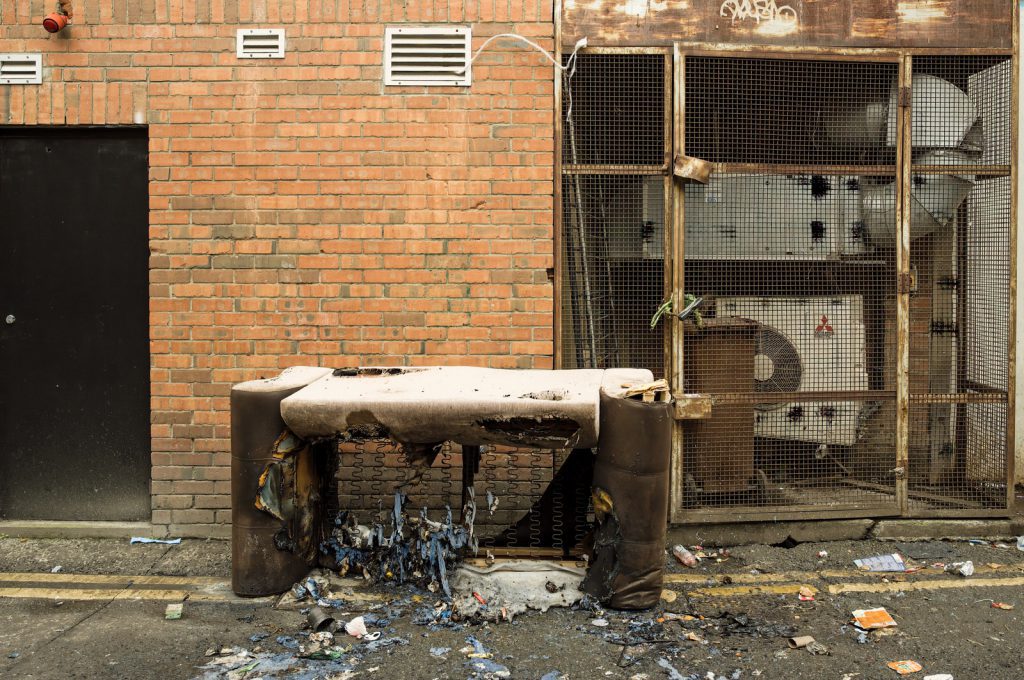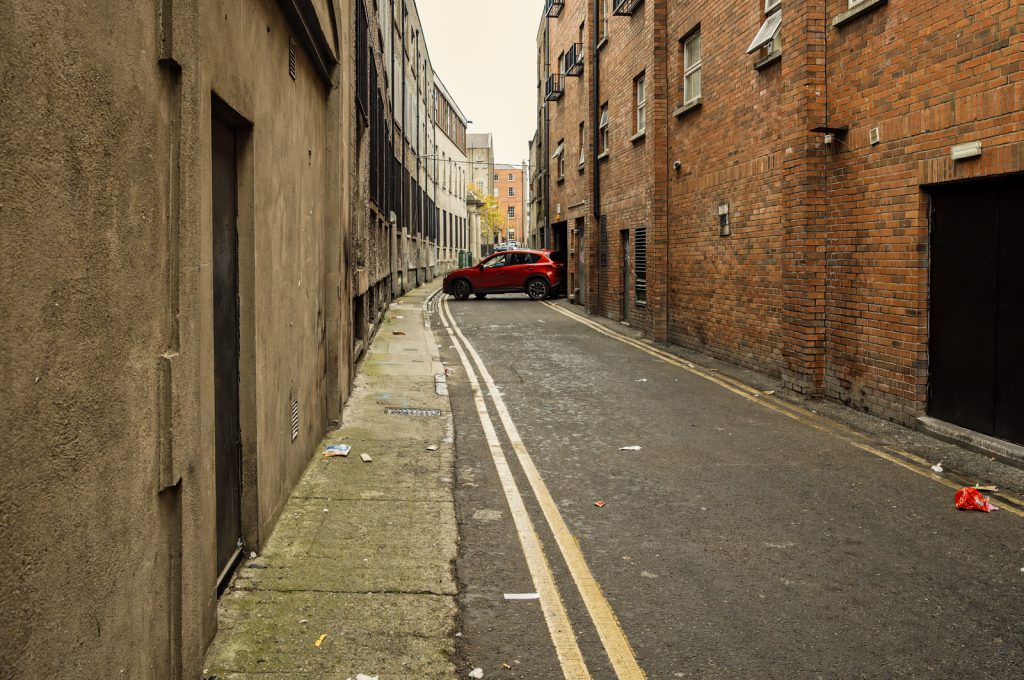THE UGLY FACE OF ANTI-SOCIAL ACTIVITY
At the best of times this section of the laneway acts as a rat run and is not safe to walk along especially at night. Until now I have not seen it in such poor condition and shortly after I photographed it public access was curtailed on the section nearest North King Street.
The street and laneway is generally held to be named after Henrietta (née Somerset; 1690–1726), the wife of Charles FitzRoy, 2nd Duke of Grafton, although an alternative candidate is Henrietta (née Crofts; 1697–1730), third wife of Charles Paulet, 2nd Duke of Bolton. The nearby Bolton Street is named after Paulet.
There is now a social housing complex at Henrietta Place which was built by Herbert Simms for Dublin Corporation in 1936 under the Housing Act of 1932, which aimed to increase the level of public housing from 2,000 to 12,000 annually. Simms was particularly involved in the construction of inner-city flat complexes. He drew from Dutch housing design and British contemporary models, and contributed to the design and construction of over 17,000 housing units in the city and suburbs. This complex illustrates some of the themes of Simms’ formula for inner-city blocks of flats, having galleried elevations and stair towers facing a large inner courtyard. Simms made interesting use of simple materials, with red brick, brown brick and a variety of render finishes employed to provide an element of visual and textural contrast. An overhanging eaves course to the inner facades and long bands of roughcast rendered galleries contribute to a strong horizontal emphasis.
